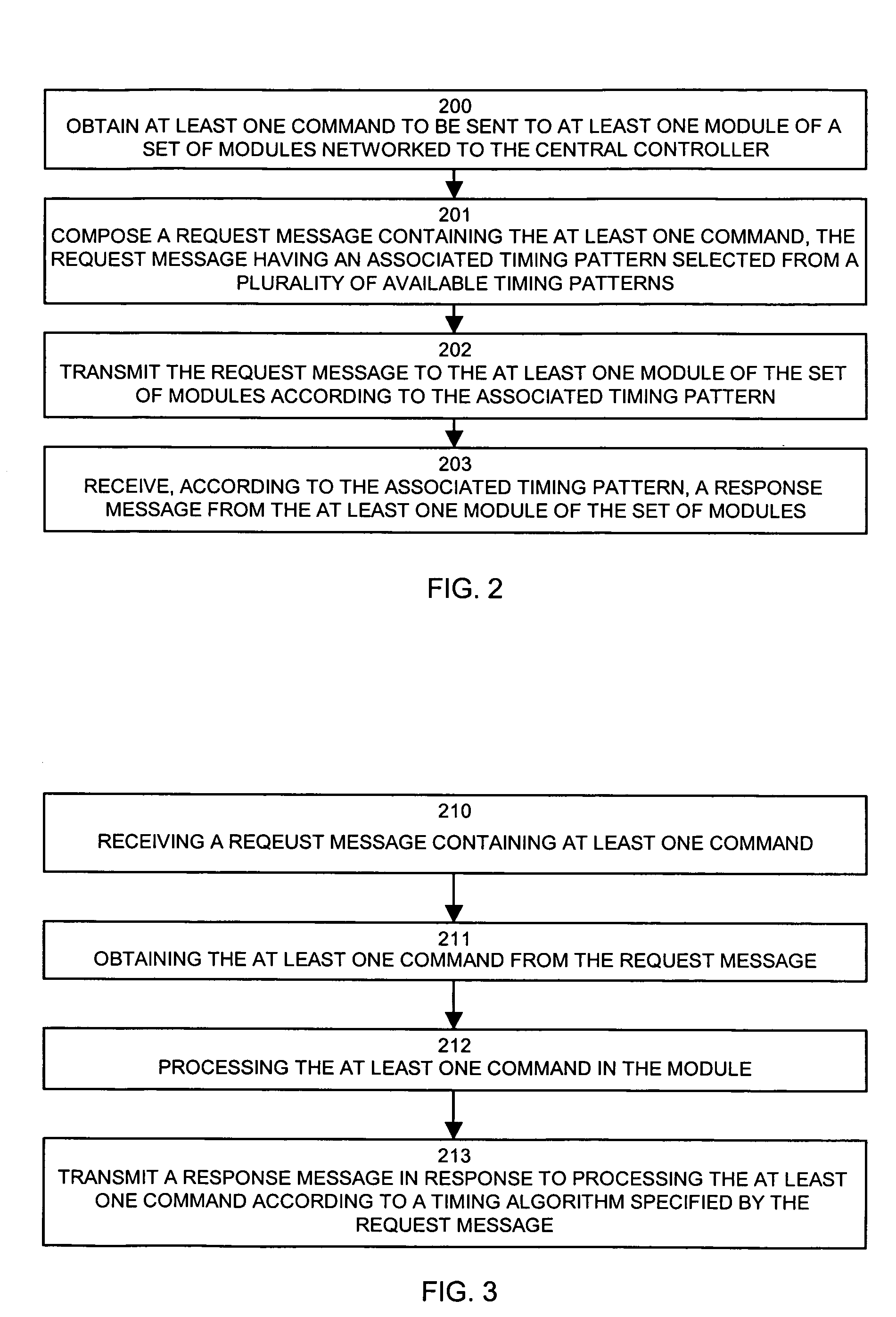Methods and apparatus for performing data acquisition and control
a data acquisition and control and data technology, applied in the field of methods and apparatus for performing data acquisition and control, can solve the problems of control systems, ip and csma/cd or csma/ca suffer from a variety of deficiencies, and it is difficult to achieve true or hard real-time communication
- Summary
- Abstract
- Description
- Claims
- Application Information
AI Technical Summary
Benefits of technology
Problems solved by technology
Method used
Image
Examples
Embodiment Construction
[0063]Embodiments of the present invention provide mechanisms and techniques that operate within a data acquisition and control system to provide a communications protocol between a central controller and a set of modules networked to the central controller that are used for controlling device within the data acquisition and control system. The DAQ-BIOS communications mechanisms and techniques explained herein allow hard real-time acquisition of data, or control of devices, according to different timing patterns thus providing flexibility in the use of the data acquisition and control system to acquire data and control devices in a variety of different situations. In addition, certain embodiments of the invention provide communications between a central controller and a set of modules networked to the central controller without the use of conventional transport layer protocols (e.g., TCP / IP) and without associated connection establishment techniques and error correction mechanisms (...
PUM
 Login to View More
Login to View More Abstract
Description
Claims
Application Information
 Login to View More
Login to View More - R&D
- Intellectual Property
- Life Sciences
- Materials
- Tech Scout
- Unparalleled Data Quality
- Higher Quality Content
- 60% Fewer Hallucinations
Browse by: Latest US Patents, China's latest patents, Technical Efficacy Thesaurus, Application Domain, Technology Topic, Popular Technical Reports.
© 2025 PatSnap. All rights reserved.Legal|Privacy policy|Modern Slavery Act Transparency Statement|Sitemap|About US| Contact US: help@patsnap.com



